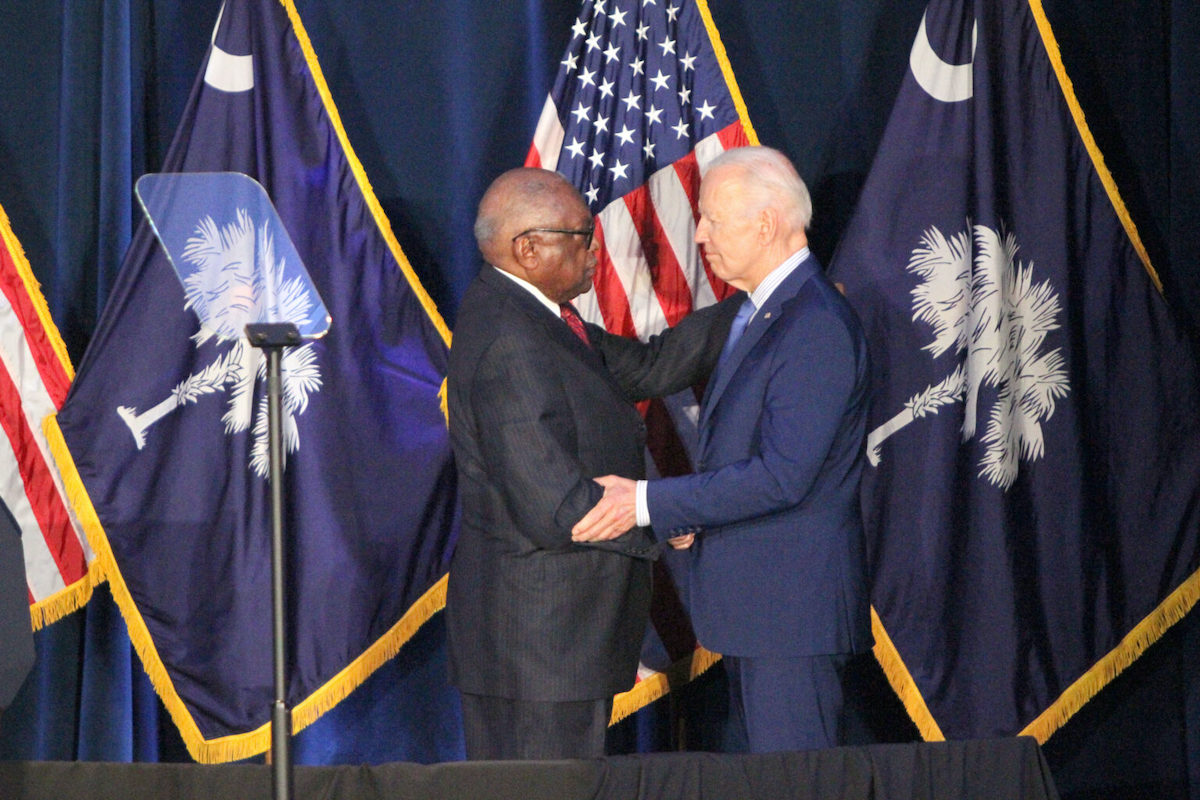Museum will display thousands of items from a private collector, feature history of nearby Shaw Air Force Base
By Abraham Kenmore and Jessica Holdman
SCDailyGazette.com
SUMTER — South Carolina’s newest military museum will be an offshoot of the Sumter County Museum, focusing on local history and artifacts related to the Air Force Base built outside this city in 1941 to train World War II pilots.
The 30,000-square-foot museum springs from one man’s passion and a $23 million infusion of state taxes.
The core of the museum comes from Sammy Way, a former high school history teacher and Army veteran, who over two decades amassed roughly 8,000 items of memorabilia, including more than 400 uniforms and 14,000 pictures.
Some of the collection is on display in a small storefront space, available to the public a few hours a week, where Way does everything from the cataloging to cleaning the display cases.
“A lot of people hunt. Some people fish. Me, I operate a museum,” he recently told the S.C. Daily Gazette.
The new, larger home for his collection — and others — will be built on vacant land next to the county museum in the heart of Sumter. Displays will focus on the county’s military history from World War I to the present, including Shaw Air Force Base. One of the nation’s oldest Air Force installations, Shaw is home to the 20th Fighter Wing, which has a lineage dating to 1927.
State earmarks
Expansion of the private, nonprofit Sumter County Museum was made possible by back-to-back years of state funding. The biggest chunk, $15 million, was included in the state budget passed in June. That was on top of $8 million approved in the 2022-23 state budget.
The museum is trying to raise an additional $5 million from donors, said Annie Rivers, Executive Director of the Sumter County Museum.
The state funding is thanks to House Speaker Murrell Smith, a Sumter Republican entering his second full year as chief of the chamber. The Sumter museum was by no means alone in receiving a legislator-sponsored earmark this year. It wasn’t even the only museum to receive money requested by a legislator, rather than a state agency. But in a budget packed with more than $700 million worth of local projects, the $15 million allotment was among the largest single earmarks.
“Sumter has a rich military history, and I think it’s very important to preserve and celebrate that history,” Smith told the S.C. Daily Gazette.
The state already has several state military museums.
The South Carolina Military Museum was actually founded in Sumter County and moved to the National Guard Armory near Williams-Brice Stadium in Columbia. The Confederate Relic Room and Military Museum, one of the state’s oldest public museums, has artifacts from every war South Carolinians have fought in and is inside the same building as the State Museum. There’s also Patriots Point Naval & Maritime Museum in Charleston Harbor.
Then there are the military museums operated by the military: An Army museum at Fort Jackson and a Marine museum at Parris Island.
Another nonprofit museum displaying private collections is the Military History Center of the Carolinas in Greenville.
Why another military museum?
The Sumter military museum will offer something different, Smith said, because it has a wealth of memorabilia related to Shaw, including the 20th Fighter Wing and U.S. Army Central (which also goes by the acronym USARCENT).
Its headquarters moved to Shaw in 2011, but its lineage as the U.S. Third Army started in WWI and gained renown in WWII as the unit driving the invasion of Germany under Gen. George Patton, hence the nickname “Patton’s Own.” In November, U.S. Army Central celebrated its 105th anniversary in Patton’s Hall at Shaw.
Smith believes a military museum in Sumter will be a destination for school field trips, as well as tourists willing to drive to the city an hour east of Columbia.
For the last decade, Way has showcased parts of his collection at the James Clyburn Intermodal Transportation Center, a former telephone factory and boarded-up warehouse transformed in 2009 into a bus terminal and event venue in Sumter.
But from the start, Way said, he wanted a better space.
Rivers said conversations about the military museum joining the county museum took off about two years ago. The project is in the design phase. Construction is expected to start in the third quarter of 2024 and take 15 months to complete.
The military museum is just the latest expansion for the Sumter County museum. It has previously added a reconstructed backcountry homestead, a heritage education center and a Jewish history center.
The combined sites attract more than 10,000 visitors a year, Rivers said. That’s already several thousand more than the South Carolina Military Museum in Columbia, according to the state military department’s report for fiscal year 2021-22.
What will visitors see?
The new military museum will include research spaces, including archives of the local newspaper, The Sumter Item, and a family history room. It will also include a local history gallery with a section on local sculptor and jewelry designer Grainger McKoy, along with storage with better climate control than the county museum’s existing space.
“I really like the local feel to it,” Rivers said. “So, of course, it’s very valuable for local residents. It’s very valuable for the younger generations to see Sumter’s involvement in the wars, but I think it’s still significant for visitors to see.”
The expanded space will be needed.
Uniforms displayed at Way’s current museum include one from the first class of Shaw flight school graduates in 1941. Ways also has medals, binoculars, entrenching tools, gas masks, airplane models, cameras, newspaper clippings, footlockers, captured enemy flags and more.
Planned additional displays at the new museum will recognize 1st Lt. Ervin Shaw, the base’s namesake, a fighter pilot who died in WWI after shooting down two German planes. The county museum is working to obtain a reconstructed Bristol F.2B biplane re-assembled from several original examples, Rivers said.
That’s the same type of plane Shaw flew in WWI. Other new displays of personal items will include letters sent to families of service members killed in action.
“It’s really powerful to see those,” Rivers said. “I’m sure people, other people, will be more excited about weapons and that sort of thing, but I like the smaller items.”
Ways also hopes the new museum will highlight the 14 generals throughout U.S. history with local connections. He already has a saber belonging to the town’s namesake, Revolutionary War hero Thomas Sumter, nicknamed the “Gamecock” for his daring exploits after the British raided and burned his home and occupied Charleston.
(What he did to recruit poor backcountry farmers to join his Patriot militia — promising slaves taken from Loyalists in exchange for 10 months of service — never succeeded in raising the numbers he wanted. He resigned his military career a year after coming up what became known as Sumter’s Law and went on to be a state legislator, congressman and U.S. senator.)
‘A sacred place’
As Way walks around his current displays, he tells the stories of the service members who owned these items, from Marine photographers to Tuskegee Airmen. The walls are covered with photos of service members. More are displayed on freestanding boards and Way says he has stacks at home that do not fit in the current space.
“Someone once asked me, ‘Why do you go down there on Sunday?’” to the museum, Way said. “I said, ‘Do you ever go to any place where you get to spend all day with 8,000 of your best friends?’ … Because when I walk in here, I see these faces. It brings back memories of all these people. Most of them, you know, I knew as friends.”
Way, who taught history in Sumter schools for 30 years, said he wants to create a museum where people can walk in and see their relatives reflected in the displays.
“When I bring children in here, I tell them immediately, ‘This, to me, is a sacred place, because there are memories here that cannot be found anywhere else,’” Way said.
Abraham Kenmore is a reporter covering elections, health care and more. He joins the S.C. Daily Gazette from The Augusta Chronicle, where he reported on Georgia legislators, military and housing issues.
Jessica Holdman writes about the economy, workforce and higher education. Before joining the S.C. Daily Gazette, she was a business reporter for The Post and Courier.








